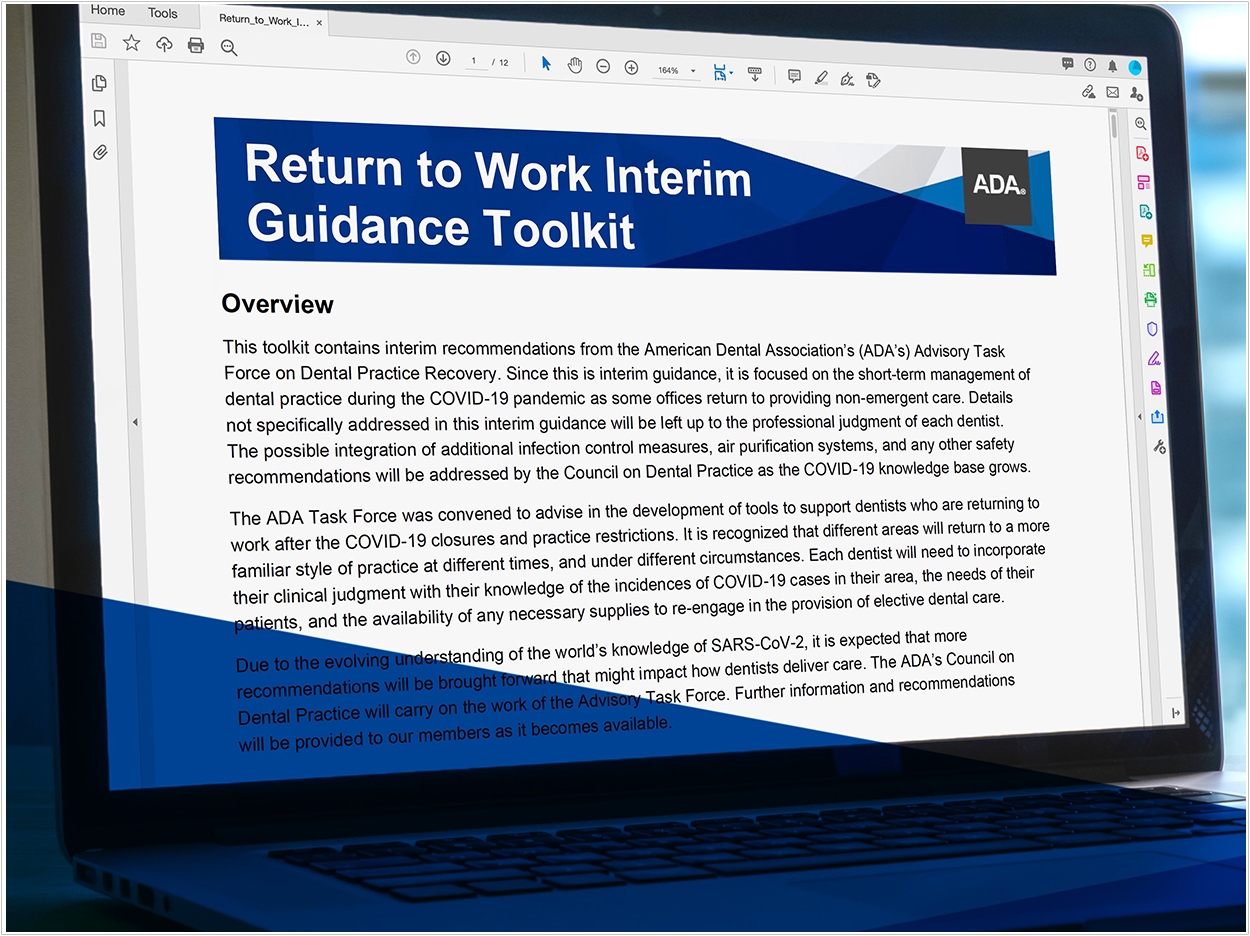
As dentists in nearly every state are now allowed to perform elective procedures again, the ADA notes that oral health is integral to overall health and that the longer dental practices remain closed to preventive care and treatment, the more likely that untreated disease will progress and increase the complexity and cost of care down the road.
The ADA further reminds practices to mind its interim guidance, which it says builds upon the already strong infection control protocols in place in dental offices and calls for the highest level of personal protective equipment (PPE) available to help protect patients and the dental team when re-engaging in the full range of oral health care.
For example, the interim guidance says, dentists and hygienists can reduce aerosols by:
- Hand scaling when cleaning teeth rather than using ultrasonic scaling
- Using high-velocity suction whenever possible
- Using rubber dental dams whenever possible
Recommendations also cover other patient interactions before, during, and after dental appointments as well as considerations for office staff procedural changes and suggestions for office setup.
Before dental appointments, dental office staff may call patients and ask them about their current health. Staff also may repeat these questions when patients arrive to make sure nothing has changed.
Also, patients may have their temperature taken prior to any procedure. Patients may be asked to bring and wear their own masks upon arrival at the dental office, particularly in states or cities that mandate the wearing of masks in public.
Patients may be asked to limit the number of people they bring to the appointment, which could mean leaving children at home under proper supervision or allowing older children who need dental care to go into the office alone while a parent waits outside during the appointment.
During dental appointments, patients may be asked to wait outside until the dental team is ready to see them to reduce the number of people in the office and the time patients are around other people.
Inside the office, things that many people often touch like toys or magazines may be removed. The office may have hand sanitizer available for patient use as well. Dental staff may wipe down items that patients touch such as pens, clipboards, or furniture.
The computer keyboard in the dental operatory may have a disposable cover so it can be easily cleaned between patients. Dental staff may use different PPE than they’ve used previously such as masks, face shields, gowns, and goggles as well.
After dental appointments, staff should thoroughly clean the areas where patients have been, using disinfectants that are effective against the virus that causes COVID-19.
The ADA also said that it will release a guide and interactive checklist to aid dentists in assessing virus transmission risks in their practices, including factors such as local disease transmission rates, patient-specific and treatment-specific issues, and facility considerations.
Additionally, the ADA said it will share its interim guidance and assessment guide and checklist for dental practices with the Centers for Disease Control and Prevention and the Occupational Safety and Health Administration.
The ADA continues to recognize that local and state government decisions regarding closures, including restrictions on elective healthcare, supersede its recommendations.
Related Articles
65% of Dental Practices Now Open
CDC Calculator Figures Out Your PPE Burn Rate
CDC Releases Guidance for Non-Emergency Dental Care












